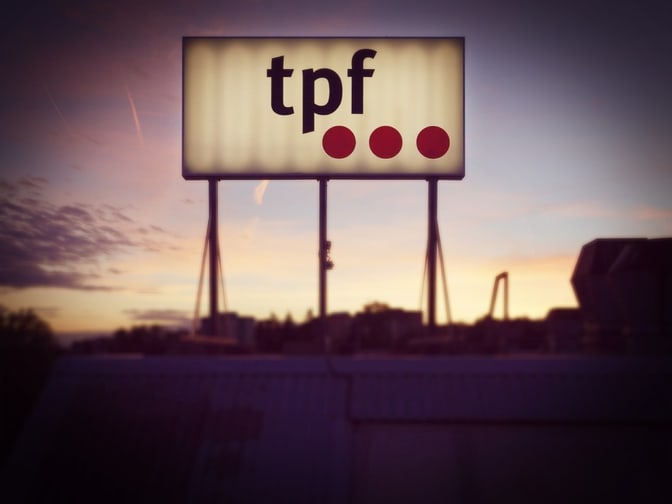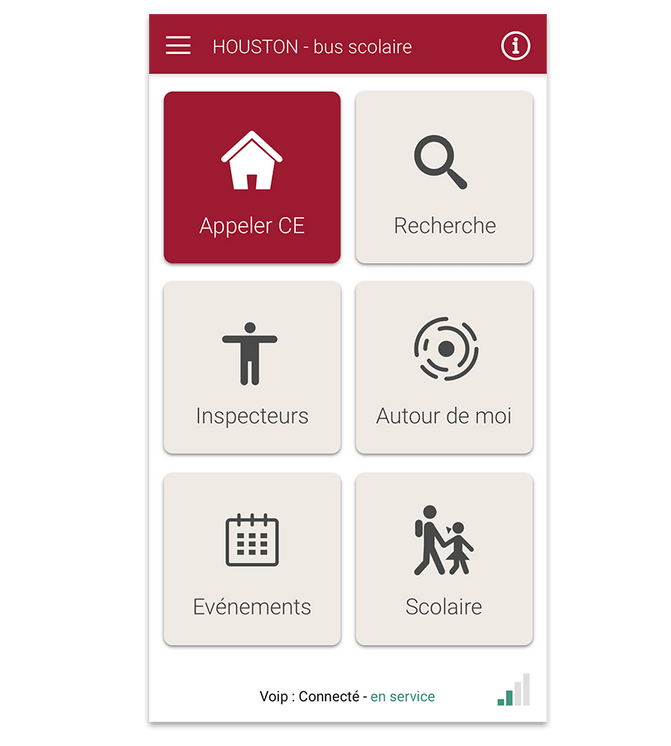Bring your company radio system to the 21st century using VoIP and mobile applications to improve communication quality while reducing costs.
With the project Houston, we took the challenge of replacing the old radio network of the Transports Publics Fribourgeois (TPF), a swiss public transportation company by a system using existing data network and running on mobile applications. This solution solved the problem of maintaining a dedicated radio network. It also improved both the global quality of the communication and the availability of the system.
Initial situation: communication based on radio system
Since decades, employees of the Transports Publics Fribourgeois (TPF) have been using standard radio to communicate between them. The radio system is meant to cover the needs of the users. It is spread over more than 200 busses, 30 team leaders and the operation center). There are three types of users, with specific needs:
- The operators – working in the operation center – use the radio to speak to a specific bus driver, or to broadcast messages to all or part of the running busses.
- The team leaders are dispatched at different locations. They use the radio to manage daily events – such as the replacement of a driver – or to inform many drivers of a change in the network – for example in case of an accident.
- The bus drivers use the bus radio as the main means of communication while driving. They can call other busses, the team leaders or the operation center.

The project: replace the old radio system
The radio system used by the employees of the TPF had some drawbacks :
- The poor quality of the communication,
- The low coverage of the network (about 60% of the territory. This is because it is too hard to cover the all territory since busses drive all over the countryside),
- The exploitation and maintenance cost of the a radio network were expensive (antennas were installed in strategic locations, all over the canton).
The goal of the project Houston was to improve the former system by replacing the radio communication system.
The challenge was to provide at least all already existing features and possibly add some new one enabled by the geo localisation of the busses. The possibility to call all busses currently in a given region was one of the new requested feature.

Screenshot of the app Houston
The solution: a mobile application
A mobile app would allow the system to modern technologies. With a mobile app, we also expected to drastically reduce the exploitation cost. Indeed, with a mobile app, it is not necessary to install and maintain radio antennas all over the Fribourg region.
We decided to create a mobile app, because they are easy to develop in comparison with dedicated embedded devices. The cost of 200 smartphones is more than justified by the flexibility and development cost that this solution offers.

We started by building trust
The way we worked hand in hand with the client had a huge impact on the success of the project. From the beginning, we asked all stakeholders and end users to explain us how they worked together with the former system. We asked what the strengths and the weaknesses of the system were. We asked them how they would like to use it.
As a result, we had a good idea of what the main features to implement were. Most importantly, we also gained the trust of the end users.
The fact that there was such a level of trust, was a good basis to develop the project. We were not hiding problems, but we were exposing them directly to find the best solution possible together. This collaboration mindset helped a lot during the development of the project.
Additional Information
_Best of Swiss App 2016: Houston wins Silver in the «Enterprise» category and Gold in the «Innovation» category
HOUSTON: The first VoIP Communication System for Swiss Public Transportation (read here)
_Meilleur du Web 2016: HOUSTON awarded in the category UX and Technology

